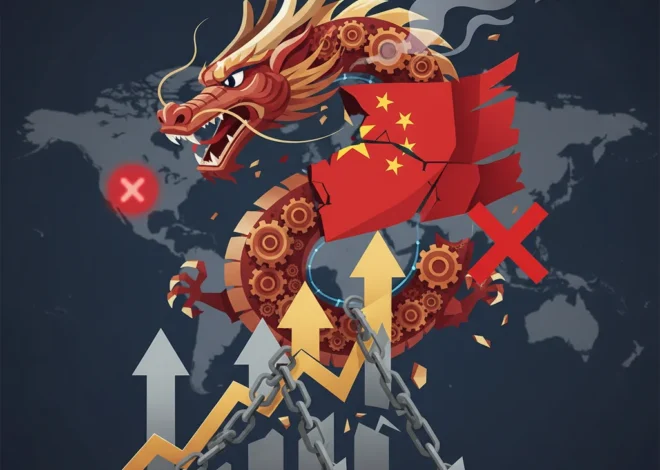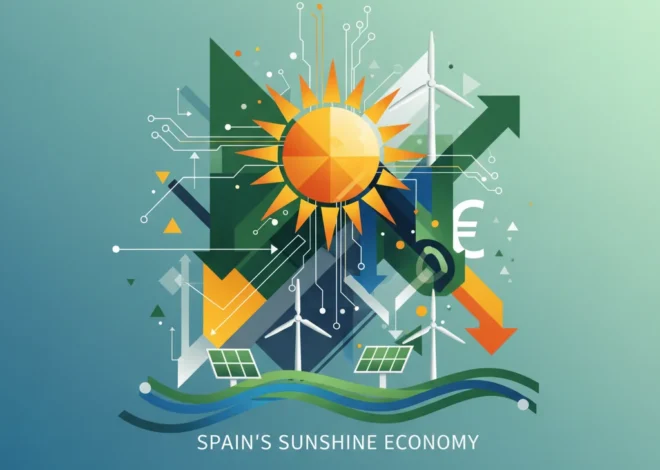
Argentina’s Economic Abyss: Why Markets Rallied on a Shock Election Result
A Surprising Surge in a Sea of Uncertainty
In the world of finance and investing, markets are said to despise one thing above all else: uncertainty. Yet, in a stunning twist following the first round of Argentina’s presidential election, markets did something utterly counterintuitive. Faced with a choice between a radical libertarian promising to take a “chainsaw” to the state and an establishment figure presiding over an economic catastrophe, investors chose the devil they knew. And the stock market soared.
Argentina, a nation grappling with a staggering annual inflation rate approaching 140%, a collapsed currency, and a populace weary of economic turmoil, stood at a critical crossroads. The polls had pointed to a strong showing for Javier Milei, an eccentric economist and political outsider who pledged to abolish the central bank and dollarize the economy. Instead, it was Sergio Massa, the current Economy Minister of the ruling Peronist coalition, who unexpectedly came out on top. The reaction from the global financial community was immediate and decisive: Argentine bonds and stocks rallied sharply, with some government bonds jumping as much as 9 cents on the dollar.
This paradoxical reaction begs a crucial question for anyone involved in the global economy, from seasoned investors to business leaders: Why would markets, typically hungry for reform, cheer the success of a candidate representing the very administration that has overseen the country’s economic decay? The answer lies in a nuanced understanding of risk, predictability, and the sheer terror of a leap into the unknown.
The Economic Battlefield: Two Starkly Different Visions
To grasp the market’s reaction, one must first understand the dire economic context and the radically different solutions proposed by the two frontrunners who are now heading to a runoff election. Argentina’s economy is not just struggling; it is in a state of perpetual crisis, a complex web of currency controls, unsustainable debt, and a public that has lost all faith in the peso.
The two leading candidates, Javier Milei and Sergio Massa, offered voters—and by extension, investors—two fundamentally different paths out of the crisis. Below is a comparison of their core economic proposals:
| Economic Policy Area | Javier Milei (La Libertad Avanza) | Sergio Massa (Unión por la Patria) |
|---|---|---|
| Monetary Policy | Abolish the Central Bank and dollarize the economy, replacing the Argentine peso with the U.S. dollar. | Maintain the central bank and the peso, focusing on stabilizing the currency through more conventional economic measures and debt renegotiation. |
| Fiscal Policy | Drastic “chainsaw” spending cuts across the government, aiming to slash the size and scope of the state. | More gradual fiscal consolidation, balancing social spending with the need to reduce the deficit, likely in negotiation with the IMF. |
| Market Approach | Radical free-market libertarianism. Privatization of state-owned companies and significant deregulation. | A more pragmatic, interventionist approach typical of Peronism, seeking to balance market forces with state control and social welfare. |
| Investor Perception | High-risk, high-reward. Represents a complete break from the past but with massive implementation risk and potential for chaos. | Known quantity. Represents the problematic status quo but offers a more predictable, albeit challenging, path of negotiation and gradual reform. |
Milei’s platform, while appealing to a populace desperate for change, was viewed by many in the financial sector as a “leap into the abyss” (source). The logistics of dollarization in a country with depleted foreign reserves and the political firestorm that would ensue from his proposed cuts created a level of uncertainty that was simply too high for many investors to stomach. The trading of financial assets is fundamentally about pricing risk, and Milei represented a risk that was nearly impossible to quantify.
The Silver Surge: Why This "Other" Precious Metal is Reclaiming Its Throne
Decoding the Rally: Why Stability Trumped Disruption
The market’s positive response to Massa’s lead was not an endorsement of his policies or his track record. On the contrary, as the current Economy Minister, he is intrinsically linked to the very problems he pledges to solve. The rally was a sigh of relief—a bet on predictability over chaos. Investors concluded that navigating the familiar, treacherous waters of Peronist economics was preferable to sailing into the completely uncharted territory of a Milei presidency.
As noted by Financial Times correspondent Ciara Nugent, the market essentially saw Massa as the “lesser of two evils.” His victory in the first round signaled a potential path of negotiation, engagement with the IMF, and a more gradual, orthodox approach to fixing the economy. While this path is fraught with its own immense challenges, it operates within a known framework. Investors can model scenarios, predict potential policy moves, and engage with a political structure they understand.
Milei, on the other hand, threatened to upend the entire system. His anti-establishment rhetoric and lack of a traditional party structure meant that even if he won, his ability to govern and pass his radical reforms through a hostile congress was highly questionable. This raised the specter of complete political and economic paralysis, a scenario far more terrifying to the stock market than the continuation of a managed, albeit painful, decline.
The Runoff and the Future of Argentina’s Economy
With the first round concluded, the stage is set for a high-stakes runoff between Massa and Milei. The deciding factor will likely be the voters who supported the third-place finisher, center-right candidate Patricia Bullrich. Her supporters are now the kingmakers, forced to choose between the establishment they oppose and the radical populist they may fear.
For the international financial community, the outcome remains a critical watchpoint. A victory for Massa would likely lead to a continuation of the current market sentiment, with a focus on his cabinet appointments and his initial negotiations with the IMF. A victory for Milei, however, could trigger immediate and extreme market volatility as investors scramble to price in the radical uncertainty of his “chainsaw” economic plan.
Regardless of the winner, the path forward for Argentina is incredibly difficult. The next president will face the immediate need to devalue the official peso exchange rate, reduce the fiscal deficit, and rebuild credibility with both the Argentine people and international creditors. This will require immense political capital that neither candidate may possess in a fractured political landscape.
Titans, Trends, and Troubles: AI Warnings, Luxury Resets, and Banking's Billion-Dollar Ghost
Implications for Global Investing and Financial Technology
The situation in Argentina offers broader lessons for those engaged in the global economy. For investors, it’s a stark reminder that in emerging markets, political risk can often outweigh economic fundamentals. The fear of unpredictable, systemic disruption can lead markets to embrace a negative but stable status quo. This dynamic is crucial for anyone building a portfolio exposed to geopolitical volatility.
Furthermore, Argentina’s crisis highlights a powerful trend in financial technology. Years of currency devaluation and capital controls have turned the country into a hotbed for fintech and blockchain adoption. Citizens have increasingly turned to cryptocurrencies, particularly stablecoins pegged to the U.S. dollar, as a way to preserve their savings from the ravages of inflation. This grassroots movement towards decentralized finance is a direct response to failures in traditional central banking and monetary policy.
While Milei’s dollarization plan is not a blockchain-based solution, his anti-central bank rhetoric resonates deeply with this sentiment. The ongoing economic drama will undoubtedly continue to fuel innovation in the financial technology sector as Argentines seek tools that offer stability and autonomy outside the control of the state. This real-world use case demonstrates the powerful role that fintech can play in economies facing extreme distress.
The 0 Billion Ripple Effect: Decoding Global Market Shifts from Defense to Finance
Conclusion: A Fragile Calm Before the Storm
The surprising market rally following Argentina’s election was not a vote for Peronism but a vote against chaos. It was a classic case of the market choosing the “devil you know” over a complete and unpredictable paradigm shift. Investors, for a moment, breathed a sigh of relief that the most disruptive scenario had been avoided. However, this relief is likely to be short-lived.
Argentina remains on an economic precipice. The fundamental problems of hyperinflation, unsustainable debt, and a lack of investor confidence persist. The upcoming runoff election will be a defining moment for the nation’s future trajectory. Whether the country opts for the painful, gradualist approach of the establishment or takes a gamble on radical, untested change, the road to recovery will be long and arduous. For global investors, business leaders, and followers of the world economy, Argentina remains a critical, if volatile, story to watch.


